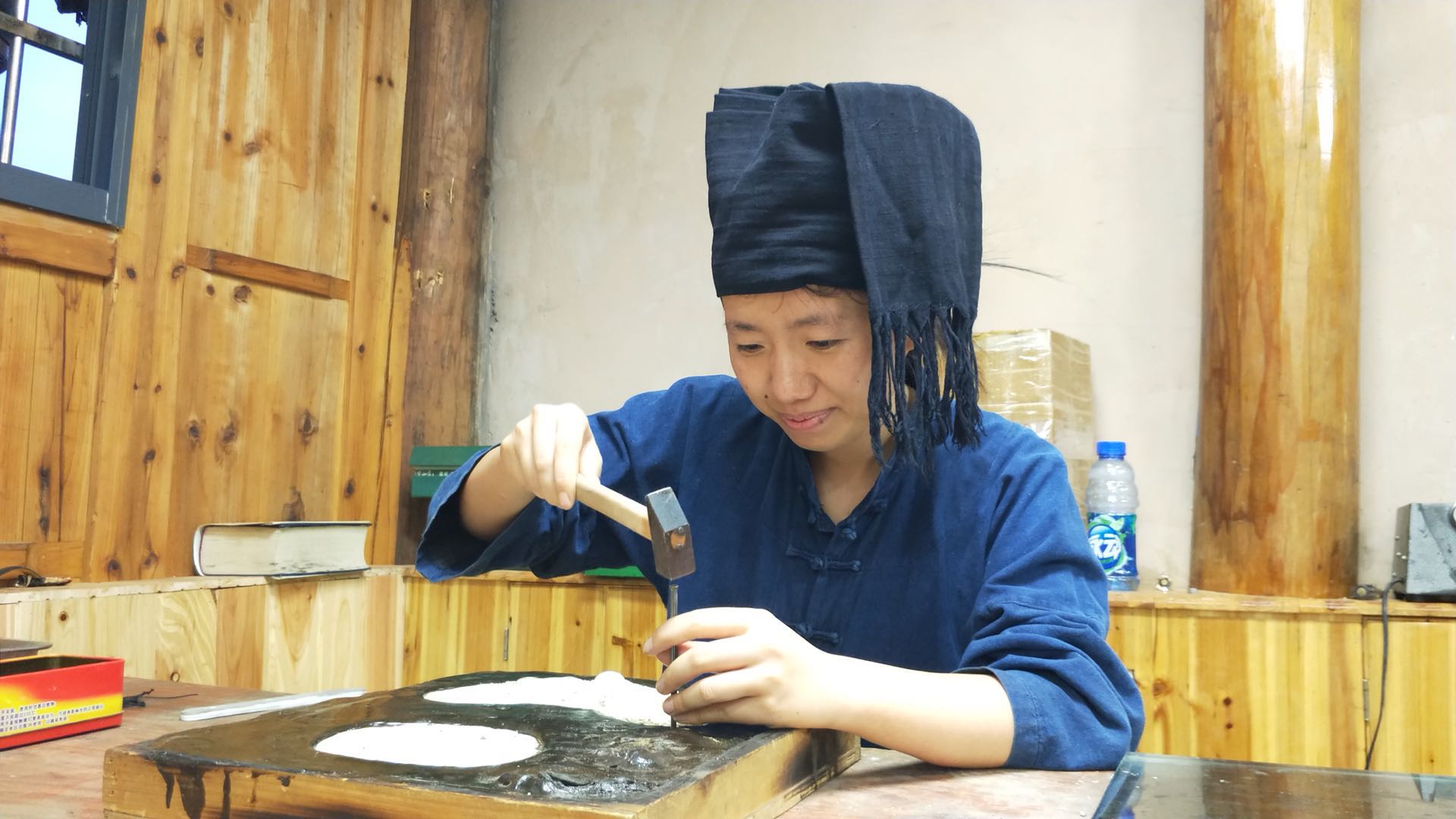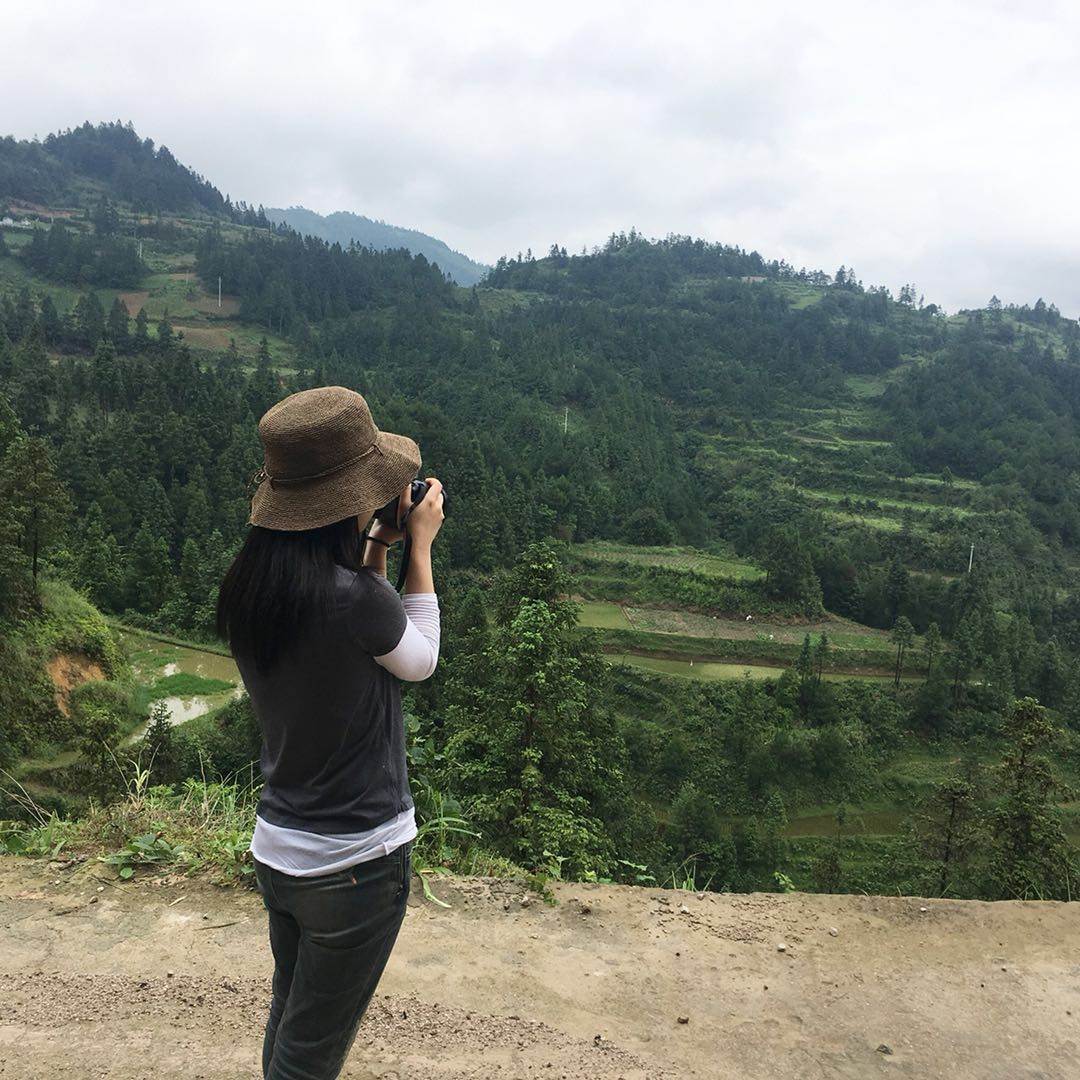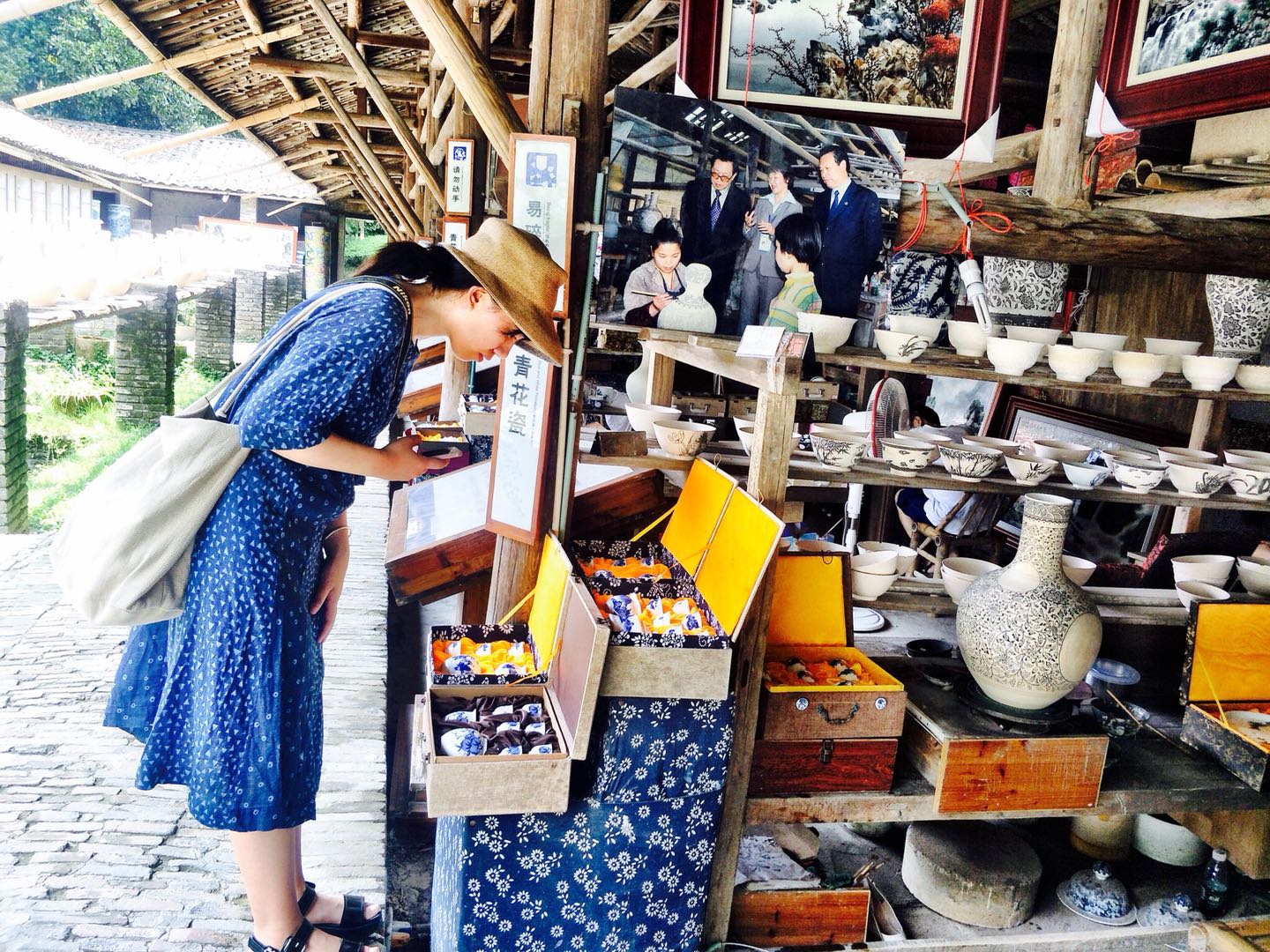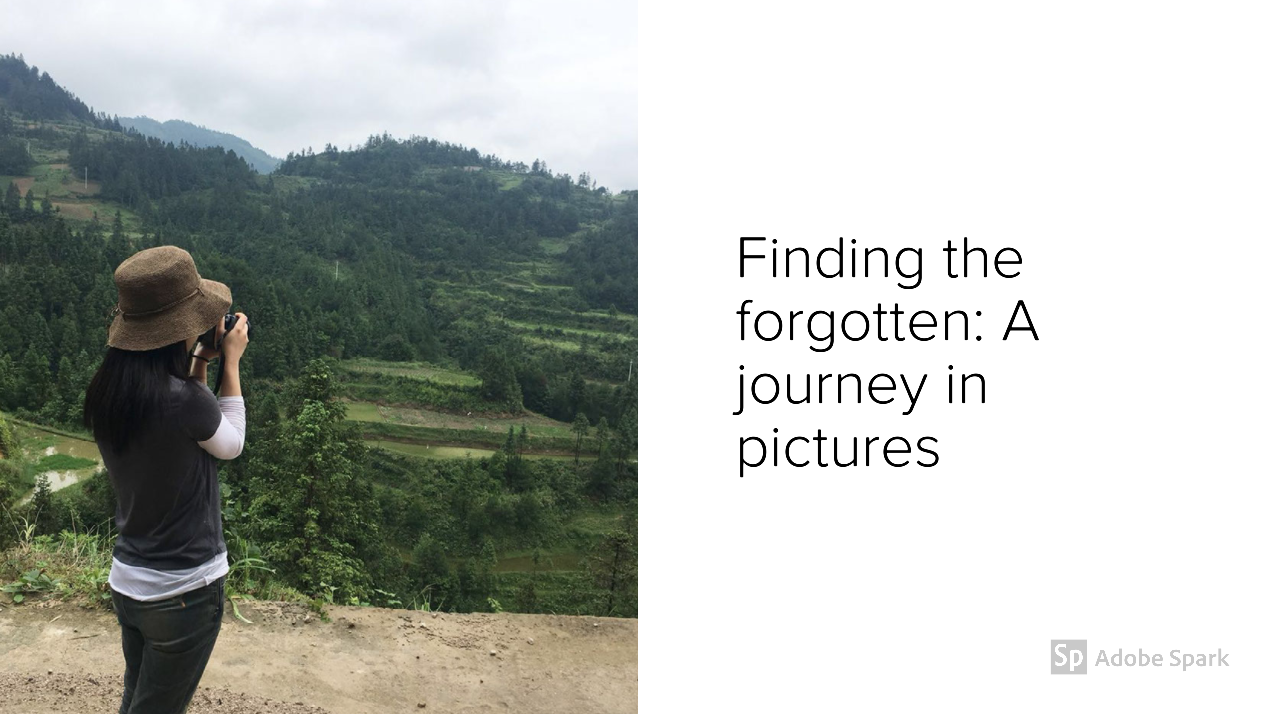

Miami student travels 8,000 miles to find a fading Asian artform
by Shavon Anderson, university news and communications
Miami graduate student Baimei Tang takes pictures of the region surrounding Kongbai Village on top of Leigong Mountain.
As the sun rose above the lush, green trees, Baimei Tang stood atop the Leigong Mountain overlooking Kongbai, the remote village where she was staying in the Guizhou province of southwest China. It was early August 2018, and by then, she’d grown comfortable in the simple community, where only a few hundred families sprinkled the dense mountainside.
You’re lucky to find a detailed map of Kongbai anywhere. In fact, Tang was still unsure about making the trip, even as she boarded a plane headed for China in May.
“Does it even really exist?” thought the Miami University graduate student, whose focus includes jewelry-making.
Three months later, she returned with an answer and an unbelievable experience.
“I wanted adventure”
Tang’s journey started with a simple question by Geoff Riggle (Miami ’10), visiting assistant professor of jewelry design and metalsmithing.
“[He] asked me, ‘Which Chinese artist do you appreciate? What kind of skill do you want to engage in?’” she said.
She’d been drawn to filigree inlay jewelry, in which trained silversmiths shape fine wires of gold, silver and copper.
“It was popular 200 years ago in the Qing Dynasty,” she said. “There’s still some antiques from that time, and a few people are making it. But, they weren’t teaching people how to make it.”
Few traceable silversmiths still handcraft traditional Asian filigree, and the group is shrinking. Wanting to learn directly from the source, Tang’s search pointed 8,000 miles away to rural Kongbai, nicknamed the “village of silversmiths”.
With support from the university and her mother, she set out on a three-month exploration.
The “village of silversmiths”
On May 20, Tang boarded a plane headed for China. Ten days later, she arrived in Kongbai, welcomed with open arms.
“They treat you as their family members,” she said.
Tang started studying under two master silversmiths, brothers Long Taiyang and Long Dongyang, whose expertise follows at least eight generations. She stayed in sleeping quarters attached to a studio, working daily as the village’s only student.
Over 41 days, Tang immersed herself in traditions of the region’s Miao people, who are renowned for the silverwork and jewelry-making that take a prominent role in their heritage. She created her own pieces, learning the art’s nuances and appreciating its history.
Aug. 9, a day before heading back to America, she tested her skills, entering a silversmith competition as one of the only women in a group of less than 12. It didn’t matter that she didn’t win. She says she was proud at what she’d accomplished, feeling as though she’d already claimed her prize.
Everything in between: peace and purpose in the pages
Tang’s time in Kongbai only bookended her three-month trip, having stopped there twice: once in May for 15 days, and again in July.
The time in between, Tang crossed another half dozen Chinese provinces, visiting museums, studios and manufacturers. During a small break, she made a stop in her home province of Hunan, where her family still lives.
She takes a deep breath, then a long pause, when asked how the trip affected her.
“I can’t say when it happened, when I started to change or when I became a different person,” she said. “I became so independent.”
Many times, feelings of fear and isolation crept in as she bounced between secluded villages and bustling cities. Her comfort came from a literary classic: The Painted Veil.
“I took the book with me everywhere,” she said.
Set in the 1920s, the novel follows a young woman’s journey through England and mainland China as she re-evaluates her life and relationships.
“I get power from this lady,” Tang said. “She had a comfortable life but wanted more.”
Before the trip, Tang questioned her life and her future. She ultimately found peace, a clearer vision and herself.

Baimei Tang looks at handcrafted pieces at a shopping stall in Jingdezhen, Jiangxi province, China.
“I want to be that person”
Tang is set to graduate in winter 2019.
She wants to open her own studio, while continuing Asian filigree and experimenting with dyes. Eventually, Tang hopes to develop a platform and advocate for better working conditions in China, after getting a firsthand look at what some of the employees are experiencing.
She’s revisiting Kongbai next summer.

